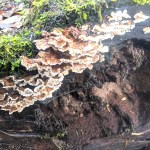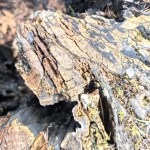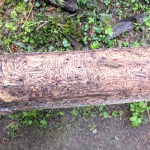Rainy Rambles: The importance of dead wood to a forest
Published 12:39 pm Monday, July 7, 2025




Our many stunning hiking and walking trails in the Columbia-Pacific region offer locals and visitors alike wondrous views of forests of many different stages of succession, from recent clearcuts attempting to come back to life, to ancient old growth stands that somehow avoided the ax and the saw.
The beauty of our area is one of its most valuable assets — so it may seem odd to some people that these forests include significant numbers of dead trees.
Some call them ugly, while others refer to them as beautiful, but they do in fact have formal names. A standing dead tree is known as a snag, but once it falls to the ground it is a nurse log, so named because its rotting wood nurses young plants and fungi in their first years of life. One could also refer to a decaying stump covered in mosses, lichens, and other green growing things as a nurse stump.
And that is really the core of the value of dead trees. For decades or even centuries they grew, taking in nutrients from the soil and turning sunlight into sugar through photosynthesis. But the main bulk of a tree — and any living being — is carbon. A healthy, mature forest is an incredible carbon sink. Some of it is stored in complex, multi-layered soil, while the rest resides in biomass, the accumulated mass of all living and dead animals, plants, fungi, microbes, and other life forms in the ecosystem.
And trees never stop adding carbon to their stores. In fact, one big, old tree will absorb and hold more carbon than several younger ones, which puts to rest the misapprehension that we should save the planet by cutting down old trees and expecting new plantings to take up the slack. And an old-growth forest as a whole will contain thirty percent more carbon than nearby second-growth forests.
A fifth of that carbon is stored in dead wood. Of course, nature doesn’t waste anything, and those snags and nurse logs won’t stick around forever. Even before a tree dies there may be saprophytes, living beings that consume dead matter, breaking down dead wood like bark and heartwood. Detritivores like Pacific dampwood termites (Zootermopsis angusticollis) eat entire pieces of wood, while decomposers such as fungi exude chemicals that break the wood down so the fungi can then absorb the nutrients freed up in the process.
But those nutrients don’t stop at the saprophytes. They are then recycled through the food web that consists of countless living beings, from tiny microbes to mighty elk. Plant seeds that land in a favorable spot on a snag, nurse log or nurse stump can begin to access some of the nutrients freed up by the fungi dismantling the wood. Some of these seeds turn into trees themselves, which continue the great carbon cycle and feed the entire community.
So it is that dead trees are the pantry of the forest. When a forest is clearcut, all the carbon and other nutrients stored in the trees is taken away, other than what little is left in slash piles. Without the protective cover of trees and other vegetation, the topsoil quickly washes away and further depletes local nutrient banks, especially on the hilly slopes of the Coast Range and Willapa Hills. A few dead trees along a forested trail don’t seem so aesthetically unappealing in comparison!
So the next time you go for a hike, take a closer look at the dead trees you find along the way. Think about how much nourishment and life they represent to the many other beings in the forest, whether right now or as the nutrients spread out through the food web. Take time to count how many individual species you may notice growing on a nurse log along the trail, even if you don’t know their names, and then remember that for every one you see there may be several that you don’t, hidden deep within the decaying wood.
And marvel in the intricacy of an ecosystem full of interrelationships that have persisted for millions of years.
Rebecca Lexa is a naturalist, nature educator, tour guide and writer in the Pacific Northwest. Her new book, “The Everyday Naturalist: How to Identify Animals, Plants, and Fungi Wherever You Go,” was published in June.












